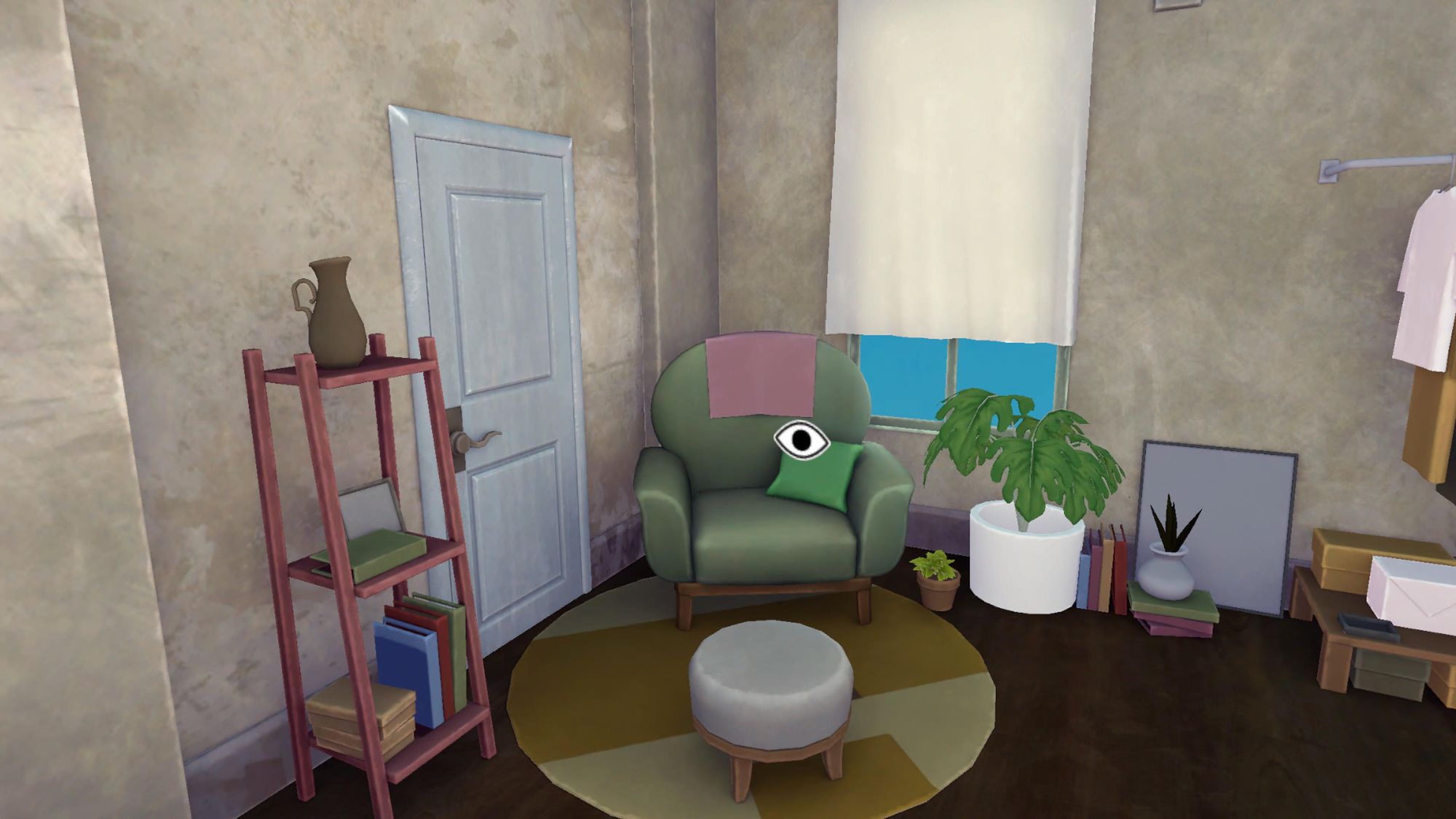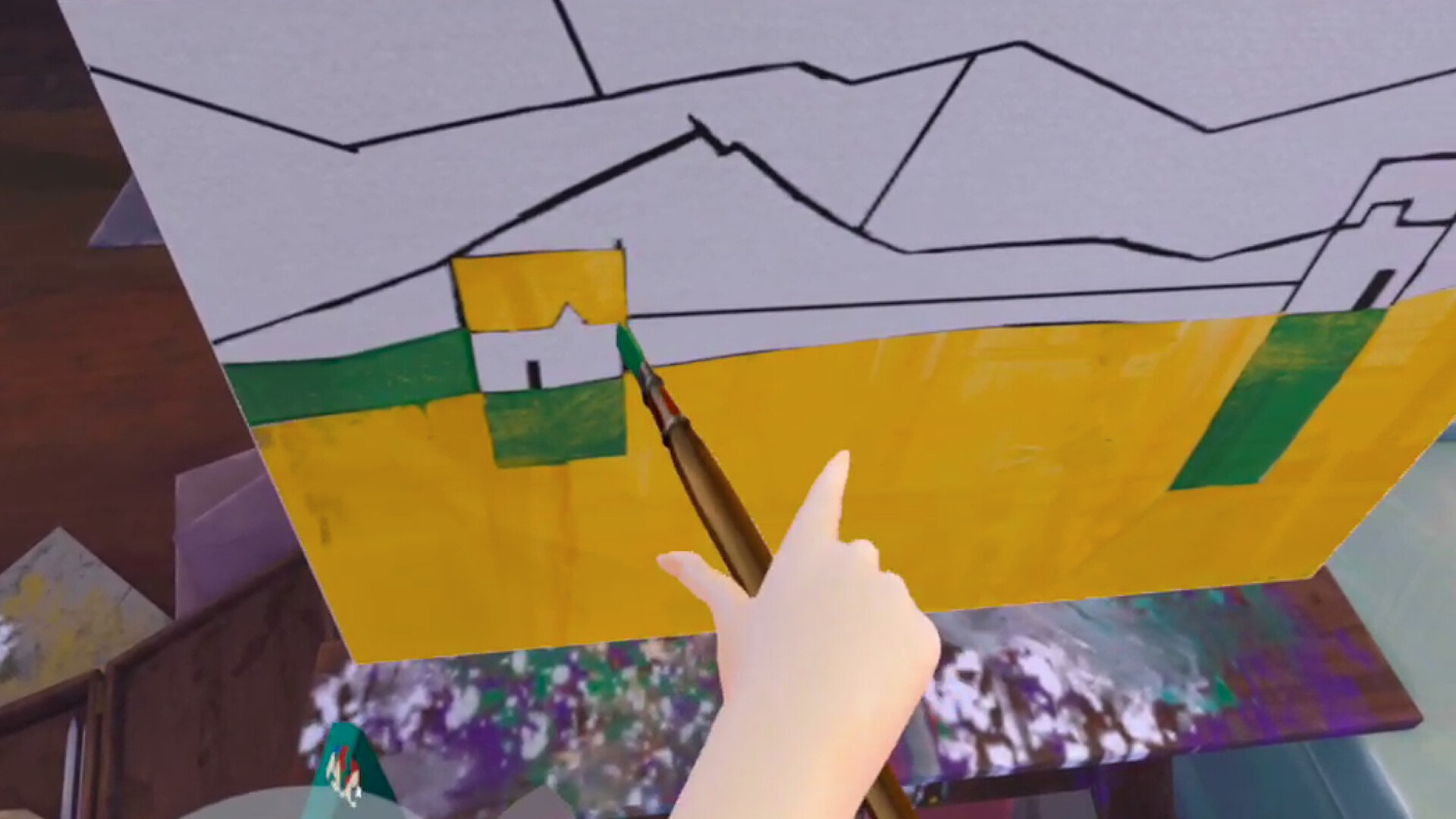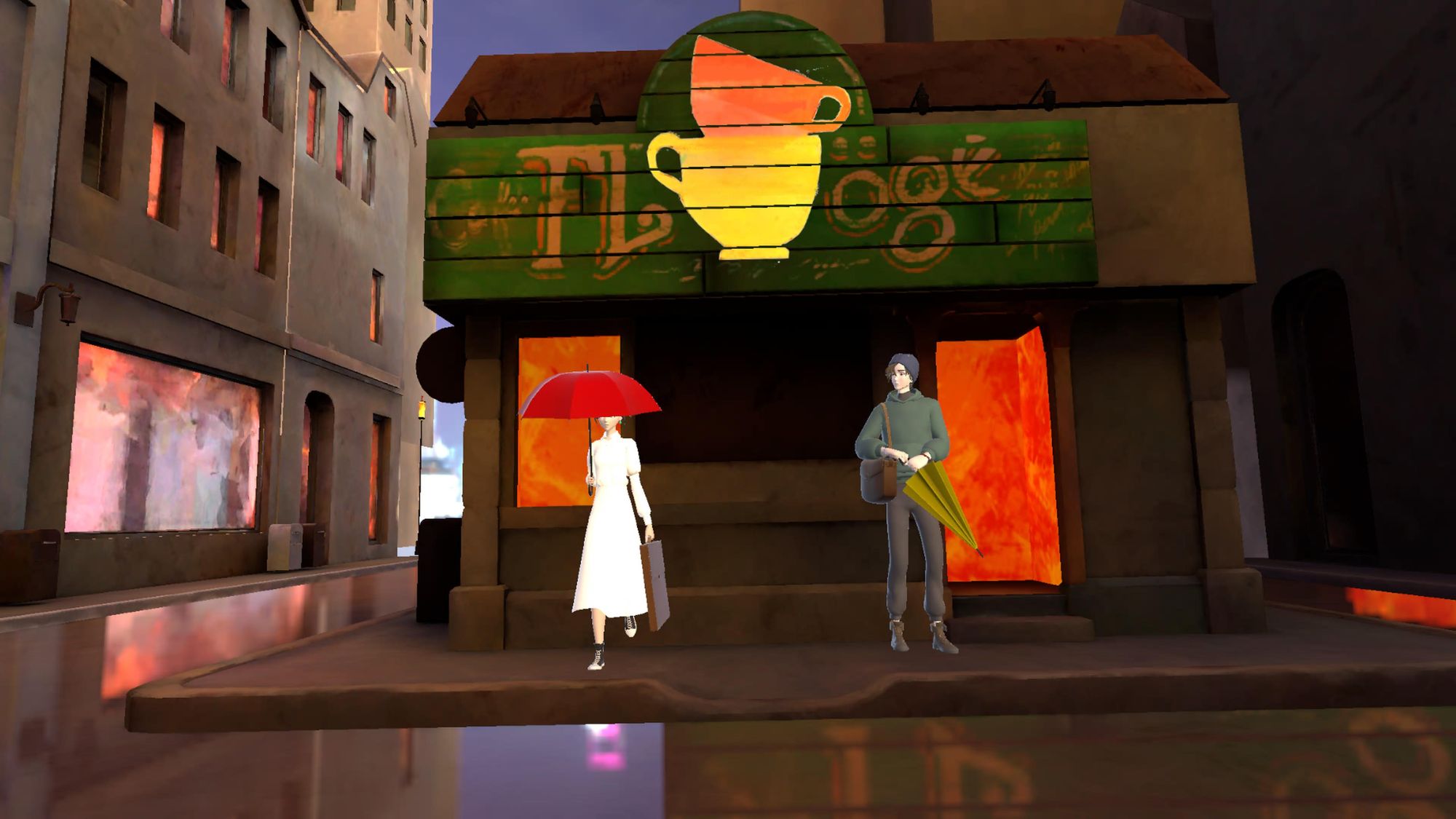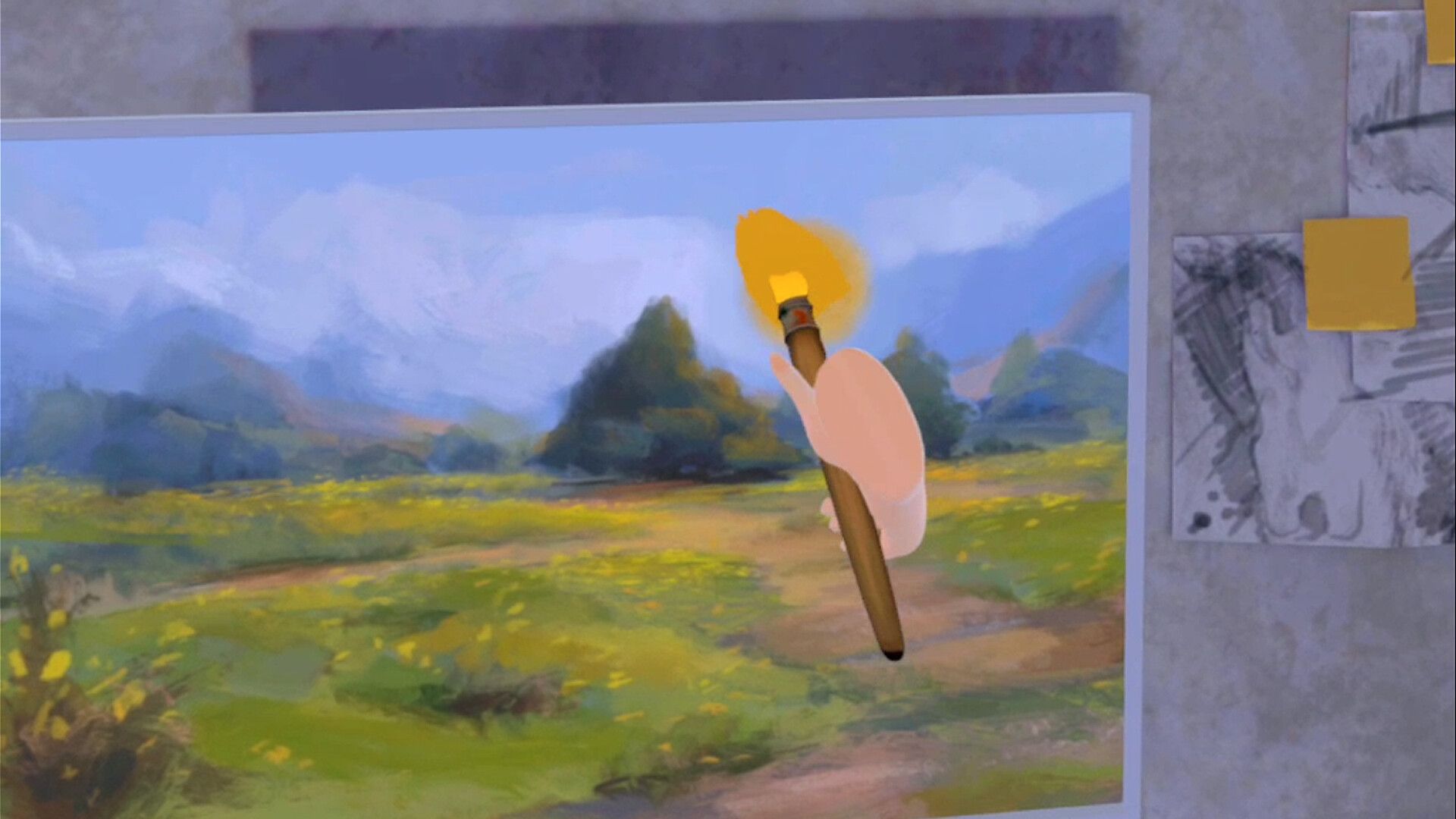Behind The Frame VR paints an intriguing scene with its Studio Ghibli-inspired visuals but a rough adaptation troubles this narrative adventure. Read on for our full review.
Two years after its flatscreen release, a 2D point-and-click adventure makes for an unlikely VR candidate. While the original lets you turn 360 degrees to explore panoramic scenes, Behind the Frame VR reimagines the premise within an explorable 3D world. The original environments are recreated well, adapting the gameplay to suit VR’s interactivity. Unfortunately, the rest isn’t a particularly smooth transition.
My problems began with the opening menu screen. It appears like a picture frame that doesn’t match its surrounding environment. Imagine a slightly 360 degree version of Windows XP’s ‘Bliss‘ wallpaper with artist tripods scattered about, and you get the idea. It’s the first example of uneven presentations that continue in-game, with regular swaps to a cinematic cutscene mode that come off as slightly jarring.
Following an aspiring artist called Amber, you relieve her past as she tries finishing her masterpiece. Her interest is piqued by her neighbour, a quiet elderly artist accompanied by his cat. Saying more would spoil the experience, yet this seemingly straightforward premise hides a compelling narrative that held my interest. Over these two hours, my artistic side came away feeling newly inspired.

Each day initially unfolds with a simple routine – cook breakfast, brew some coffee, play your music and send off some emails. The story mostly unfolds in Amber’s home, occasionally cutting away to other locations. The interactions themselves aren’t especially interesting, yet they slowly build a picture of Amber’s life. Those point-and-click roots are still evident despite the 3D swap, as you’ll be clicking on different objects with a laser pointer for brief descriptions.
Items are often highlighted across Amber’s apartment, signaling that a puzzle needs solving. That sometimes requires little more than adding a splash of color to an existing picture or following some footsteps. Other moments involve recreating patterns found in your notebook with interactive objects. Usually it’s nothing particularly complicated, though some moments test your memory.
Painting your own picture feels nice and you gradually find new colors after solving puzzles. Those moments are brief though. I also encountered problems when adding paint to pre-existing paintings. I could completely fill shapes with the correct color and yet Behind The Frame wouldn’t register that I’d done so, whereas random scribbles would sometimes do the trick. The detection was frustratingly inaccurate.

It’s not the only design issue I encountered either. The laser pointer only appears when pointing at a specific object, which makes aiming from afar tricky. Selecting items to hear descriptions causes them to shake, and select textures often appeared distorted for several seconds. Another bug saw cutscenes play while exploring if I recalibrated my position. That jointly creates an uncomfortable sensation.
Behind The Frame VR – Comfort
Behind The Frame VR uses stick-based artificial locomotion with snap turning, there’s no smooth turning option. Though you can swap between teleport and smooth movement by pushing L3, teleport didn’t work at all during my playthrough. Seated play is unsupported and there are no comfort settings – the options menu only includes audio sliders.
On PSVR 2, comfort concerns weren’t helped by multiple bugs. Object textures would flash and distort when selecting certain items in Amber’s flat, and walking towards the kitchen suddenly raised my height. I can’t confirm whether the bugs are unique to PSVR 2 or also present on the PC VR and Quest releases, but they nonetheless caused me to feel nauseous after 30 mins.
Like the comfort issues mentioned above, I can’t confirm whether these are multi-platform problems also present on the Quest and PC VR release, but the PSVR 2 edition feels highly unpolished. These problems got considerably worse in later chapters, with items beginning disappearing from the journal and text overlapping on the options menu. Behind The Frame: VR clearly needed more QA testing before releasing.

Behind The Frame VR – Final Verdict
Behind the Frame’s biggest strength comes from its strong narrative, which was present in the original flatscreen release. While that hasn’t been lost in this 3D reimagining, it’s certainly been hindered. Between poor technical performance, uneven visuals and design problems, Behind The Frame: VR feels like a disappointing take on the original concept. Future patches may improve things but right now, I’d suggest the flatscreen game instead.
UploadVR focuses on a label system for reviews, rather than a numeric score. Our reviews fall into one of four categories: Essential, Recommended, Avoid and reviews that we leave unlabeled. You can read more about our review guidelines here.





